
In this review, we’ll be taking a look at the Samsung Galaxy A30. Introduced to the Philippine market back in March, the A30 aims to please the mid-range crowd. As such, it was shipped with decent specs like an Exynos 7904 chipset, an Infinity-U display, and dual-rear cameras.

| Chipset | Exynos 7904 |
| Screen | 6.4-inch Infinity-U, SuperAMOLED, FullHD+ 2340 x 1080, Corning Gorilla Glass 3 |
| RAM | 4GB |
| OS | Android 9.0 Pie, Samsung One UI |
| Rear Camera | 16MP f/1.7, 5MP f/2.2 |
| Front Camera | 16MP f/2.0 |
| Storage | 64GB expandable via MicroSD slot |
| Network | Dual SIM, Triple Slot, 4G LTE |
| Connectivity | WiFi, Bluetooth, USB Type-C |
| Battery | 4,000mAh, 15W Fast-Charging |
| Others | Fingerprint Scanner, Face Recognition, Scene Optimizer, AR Emoji, Bixby, Flaw Detection |
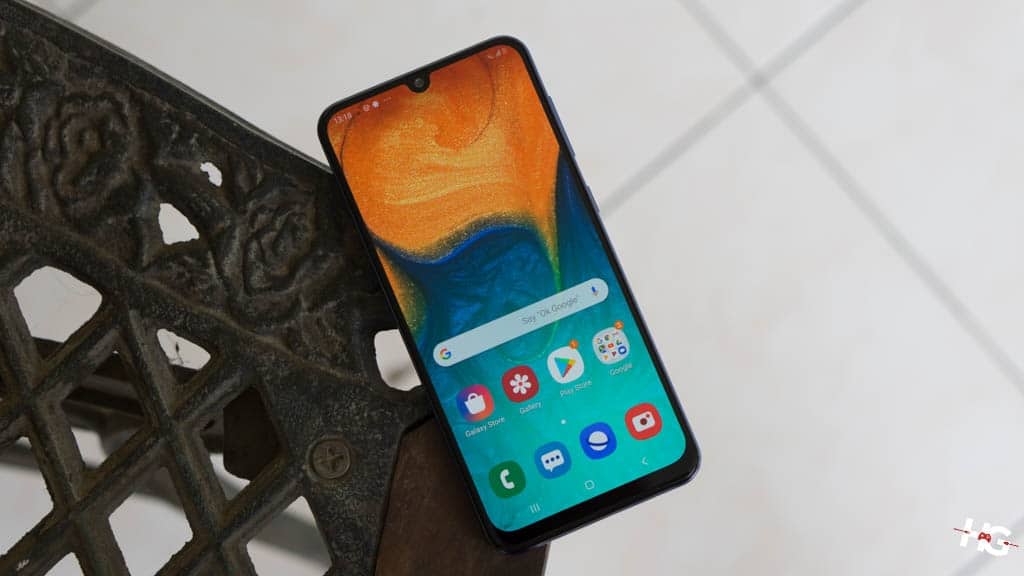
At the front of the Samsung Galaxy A30’s chassis is a 6.4-inch SuperAMOLED screen with an Infinity U design that reaches a resolution of 2340 x 1080. Although the display users an older Corning Gorilla Glass 3 for its protection, it still serves its purpose of protecting the screen from the elements.
On our daily usage, the A30’s display was able to keep up with us throughout the day. The screen reproduces well-saturated colors and is bright enough to use outside even with the sun bearing down. As expected from an AMOLED displays, blacks are truly deep allowing the colors to pop-out even more.
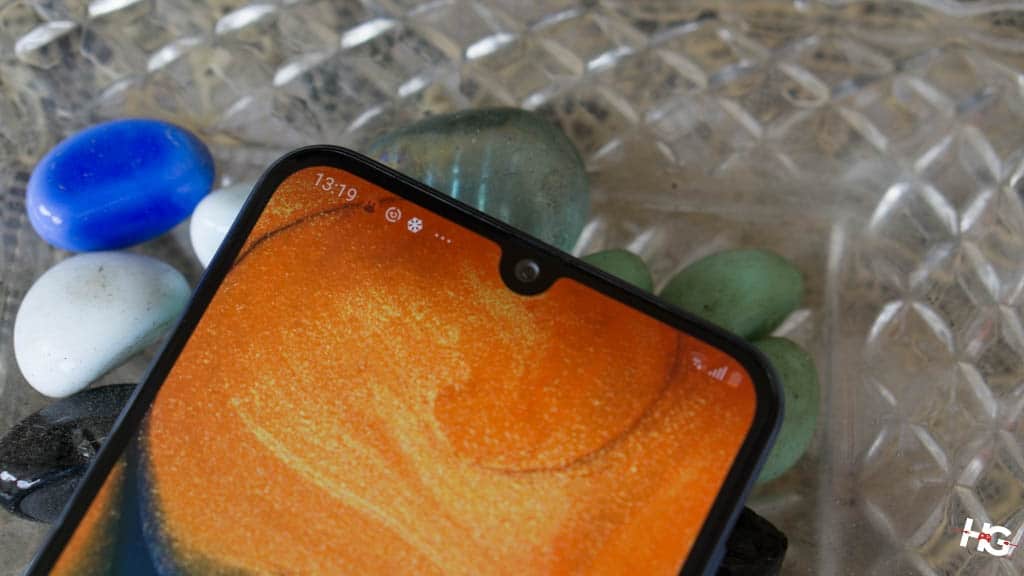
On the Samsung Galaxy A30’s notch rests a 16MP f/2.0 front-facing camera. Just above the camera is a little slit that smartly houses the smartphone’s first set of speakers. Unfortunately, Samsung has removed the notification light. Users, however, can set the display to an always on mode for notifications.
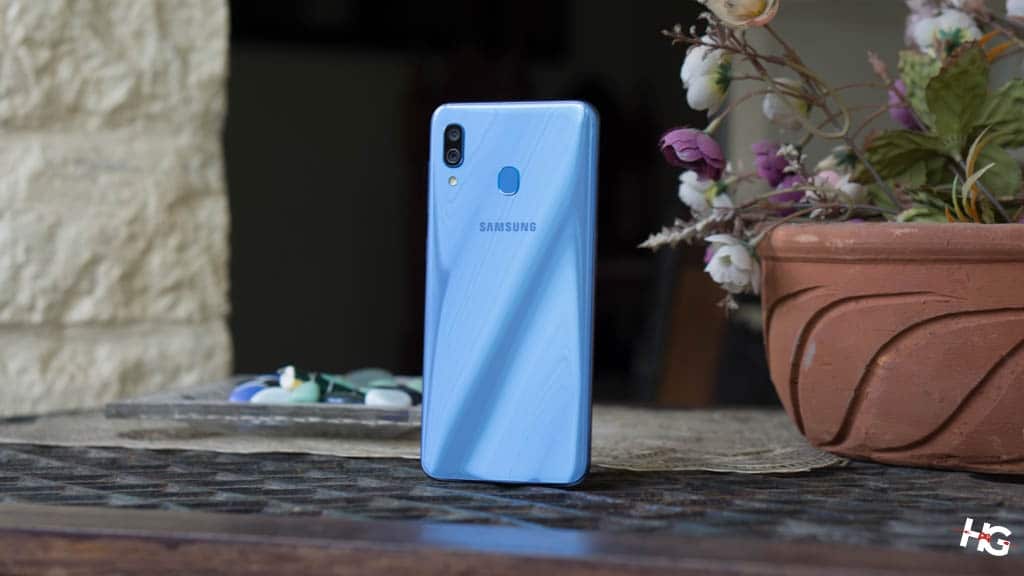
The Samsung Galaxy A30 sticks to a traditional monotone color scheme instead of the two-tone design found on some of its contemporaries. It is shiny and that finish allows the Galaxy A30 to become a fingerprint and smudge magnet. Breaking the rather elegant blue color scheme of the smartphone are the fingerprint scanner and its cameras.
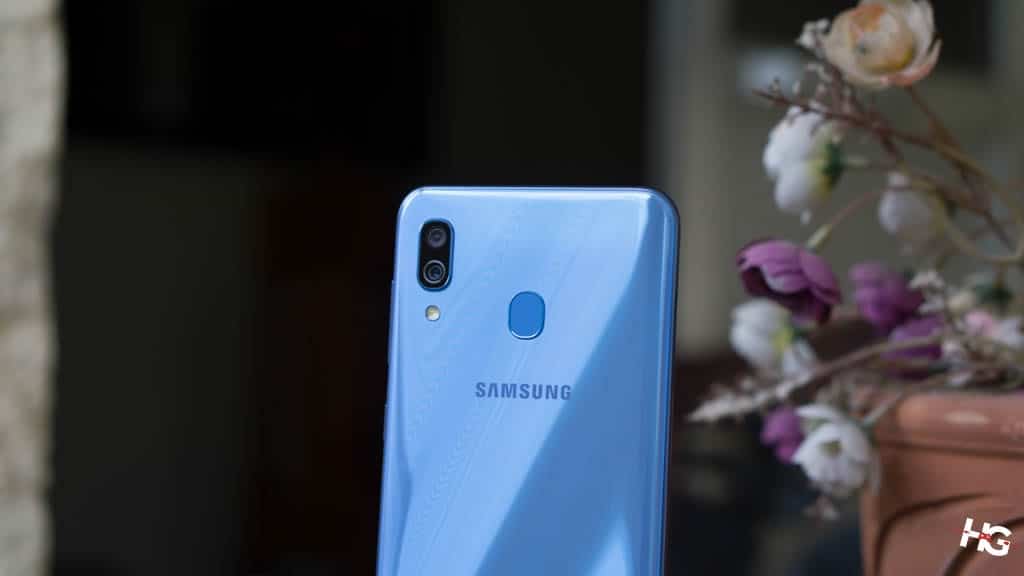
Its main shooter is composed of two cameras: a 16MP f/1.7 main camera and a 5MP f/2.2 ultrawide shooter Just below the dual rear cameras is its LED flash used when shooting in low-light conditions.

The smartphone conveniently comes with a Triple-slot SIM tray that allows users to place two SIM cards alongside a MicroSD card to expand the 64GB internal storage. Located at the bottom of the handset is a 3.5mm audio jack, a USB Type-C port, a hole for the microphone, and its bottom-firing speakers.
In terms of design, the Samsung Galaxy A30 feels and looks like a premium product. Its monochrome color scheme exudes elegance and its modern looks detract from its mid-price roots.
The Galaxy A30 comes with the Samsung One UI over the Android 9.0 Pie OS. This latest user interface from Samsung aims to streamline and make everything simpler to its user.
Icons have distinctive rounded edges to give off a modern look. The task bar and the settings menu looks cleaner than before while being easier to navigate. The standard menu keys at the bottom can be removed in lieu of gestures.
The Samsung Galaxy A30 ships with a dual camera setup at the rear: a 16MP f/1.7 main shooter and a 5MP f/2.2 ultrawide camera. The main 16MP camera takes decent shots when under the right conditions.
Photos taken by the main camera are well-saturated on auto. Samsung also employs a scene optimizer on the camera to increase sharpness and contrast on the photos. Depending on your preference, the optimizer might give off a bit of an “edited” feel on your photos.
The 5MP f/2.2 ultrawide camera on the Galaxy A30 is a bit less impressive compared to the primary shooter. With such a low pixel count, photos look a bit less detailed when put side-by-side to the main camera. There is a bit of distortion at the edges but nothing too significant to ruin photos.
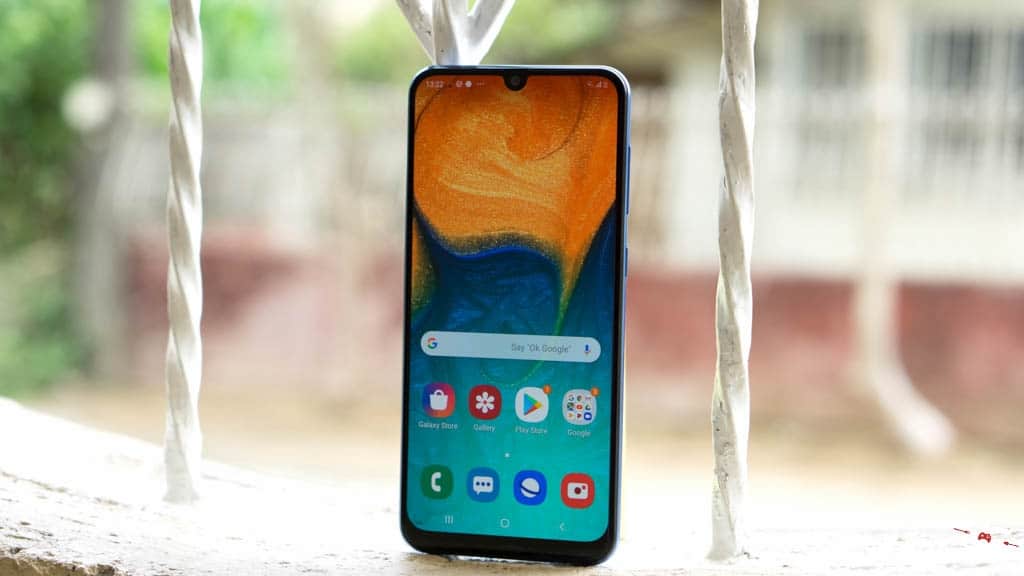
The Samsung Galaxy A30 is equipped with an Exynos 7904 chip based on a 14nm FinFET process. Backing up the 14nm chip is 4GB of RAM. Packing dual 1.8GHz cores and six 1.6GHz cores, the chip is able handle daily tasks without a sweat.
In order for the Samsung Galaxy A30 to get a steady framerate in games, however, a few settings might need a bit of tuning. The smartphones chip will only deliver decent framerates once more demanding settings are turned down.

As far as benchmarks go, the Galaxy A30 pumped serviceable numbers from PCMark Work 2.0 and AnTuTu. The smartphone was able to reach a score of 5233 in the former and 94671 in the latter.
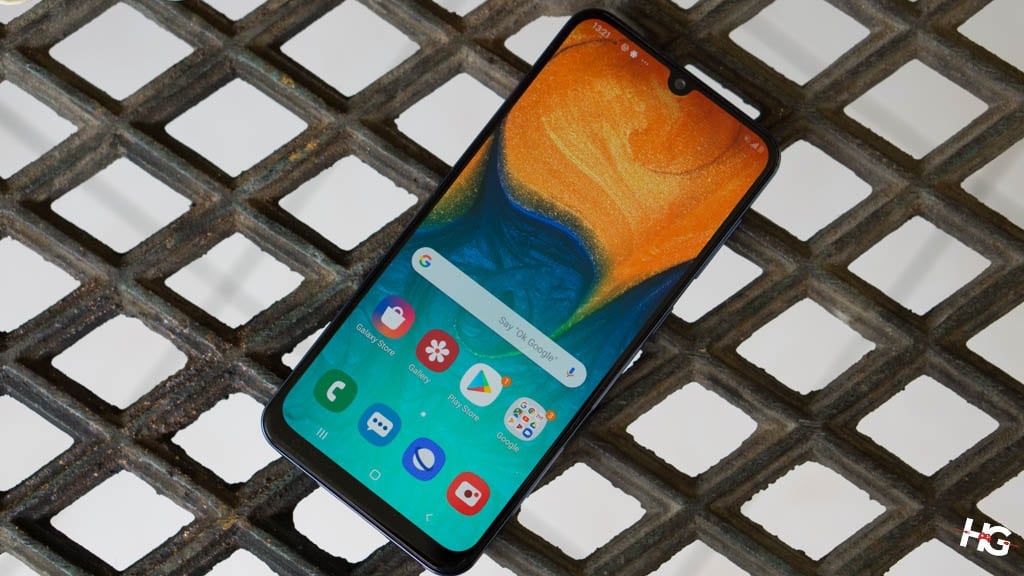
The smartphone gets its juice from a 4,000mAh battery. Although the Samsung Galaxy M20 trumps the A30 in the battery department in terms of sheer specifications, the A30 was still able to last around a day in medium usage.
Charging is done via a USB Type-C port at the bottom of the device. Fortunately, the Galaxy A30 comes with 15W Fast Charging that allow its battery to be topped off from 0 to 100% in just around 2 hours.
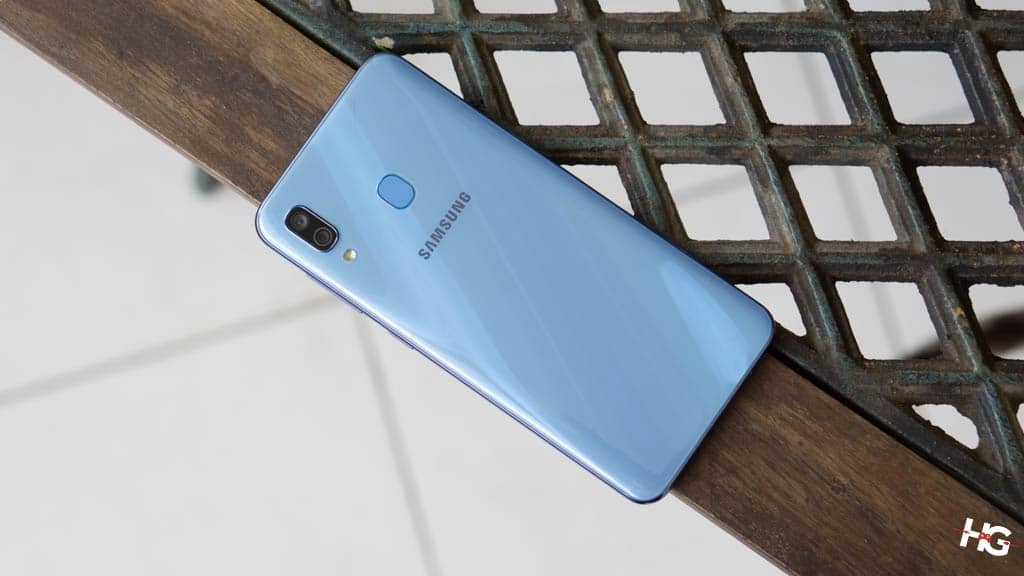
There’s no denying it, the Samsung Galaxy A30 looks gorgeous in the right light. This new design language from the company allows them to separate their products from other smartphones in the market by just sight alone.
Inside its aesthetically pleasing shell is a bit of an average performer. In terms of sheer computing performance, the Galaxy A30 was able to produce fairly decent numbers in benchmarks – but that’s just it – “decent.”
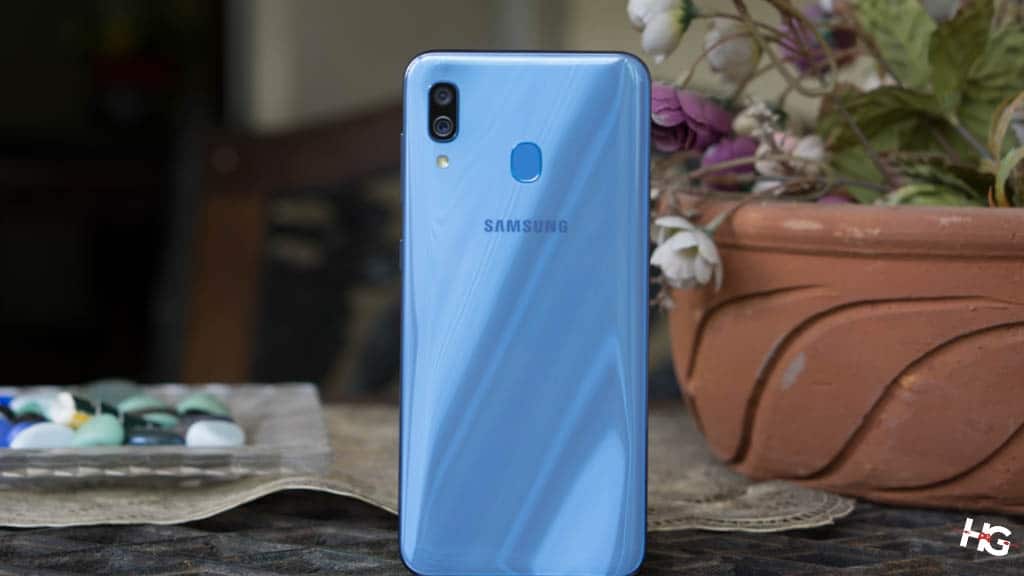
As far as camera performance go, it would be better to stick to the main camera as it is able to take prettier and detailed photos compared to the relatively lower megapixel count ultrawide camera.
Another advantage that the Galaxy A30 has is its screen. Samsung has essentially mastered the SuperAMOLED panel, which allows the smartphone to have great screen quality for just PhP 13,990.
While the Samsung Galaxy A30 only distinguishes itself from the pack with its design and great screen, it is still a rather functional smartphone. With a pretty exterior and an expected performance for its price range, the Galaxy A30 might be for those who prefer aesthetics over blazing performance.
